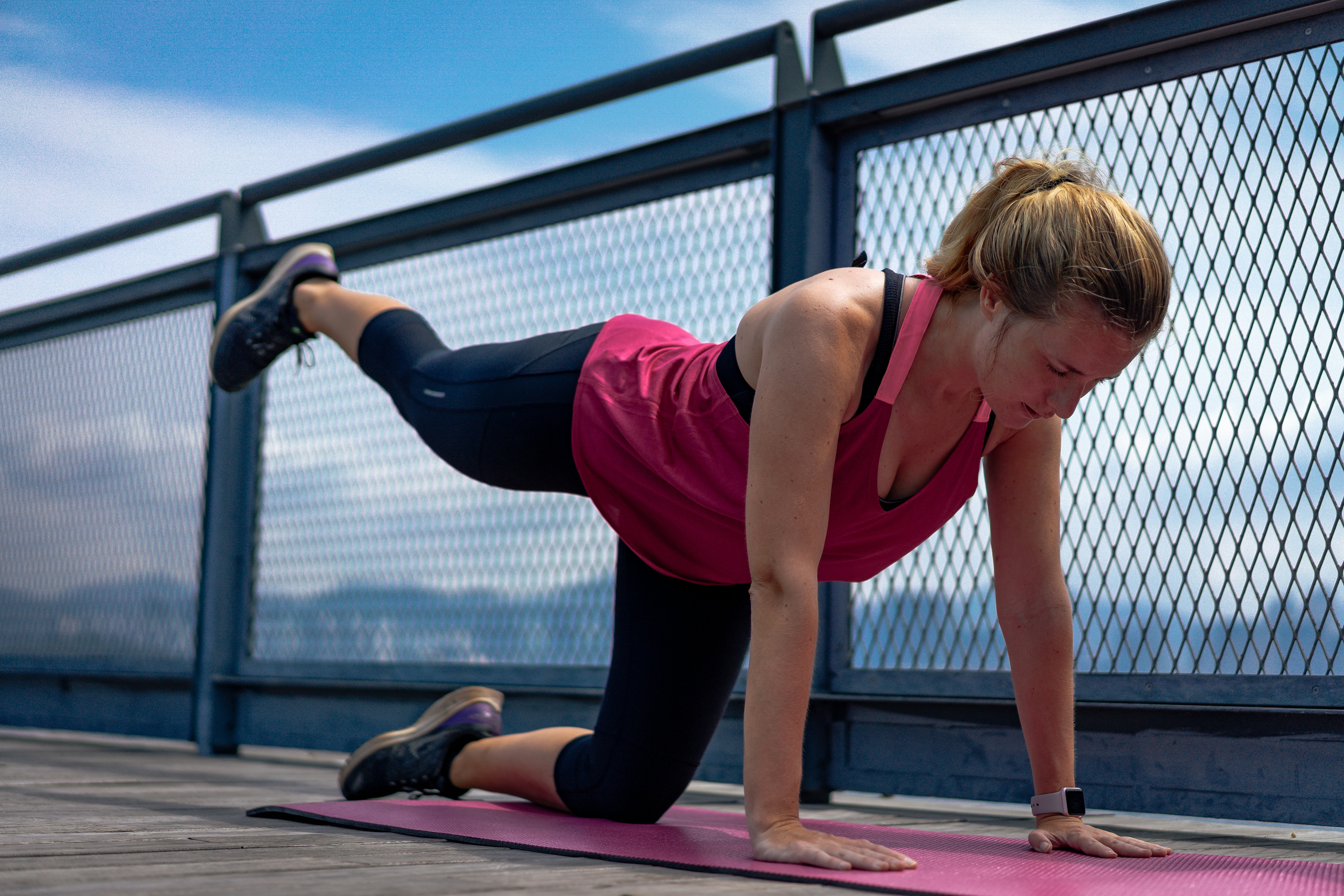Fitness and Mental Health: How Exercise Fights Anxiety and Depression

Fitness and Mental Health: How Exercise Fights Anxiety and Depression
"Exercise is a celebration of what your body can do, not a punishment for what you ate." – Unknown
Introduction
Mental health disorders such as anxiety and depression affect millions of people worldwide, and many are seeking ways to manage these conditions beyond medication. One powerful tool that has garnered increasing attention for its positive effects on mental well-being is exercise . Research consistently shows that physical activity can be an effective natural remedy for reducing symptoms of anxiety and depression.
In this article, we will explore how exercise impacts mental health, the physiological processes involved, and how you can incorporate fitness into your routine to combat mental health challenges.
The Link Between Exercise and Mental Health
1. The Stress Response
Both anxiety and depression are often related to an overactive stress response in the body. When we experience stress, our body releases hormones like cortisol and adrenaline , which can increase heart rate, blood pressure, and promote the "fight or flight" response.
Chronic activation of this stress response can lead to symptoms of anxiety and depression . Exercise, however, has been shown to help regulate this stress response by:
- Reducing cortisol levels : Regular physical activity helps lower cortisol, the body's primary stress hormone.
- Increasing endorphins : Exercise stimulates the release of endorphins , which are the body's natural mood elevators. Endorphins help reduce pain and promote a sense of well-being.
🧠 Fun Fact : Exercise is often referred to as a natural antidepressant due to its mood-boosting effects.
2. Neurotransmitters and Brain Chemistry
Anxiety and depression are closely tied to imbalances in certain neurotransmitters in the brain, such as serotonin , dopamine , and norepinephrine . These chemicals are involved in regulating mood, motivation, and emotional stability.
Exercise can influence brain chemistry by:
- Boosting serotonin levels : Regular physical activity can increase serotonin production in the brain, which plays a key role in improving mood and reducing feelings of anxiety.
- Releasing dopamine : Physical exercise stimulates the release of dopamine , the "feel-good" neurotransmitter associated with pleasure and reward.
- Increasing norepinephrine : This neurotransmitter helps improve focus, attention, and mood, and exercise has been shown to elevate its levels.
3. Neuroplasticity and Brain Function
Another important benefit of exercise is its ability to promote neuroplasticity , the brain's ability to reorganize and form new connections. This process is crucial for learning, adaptation, and recovery from mental health challenges like depression.
Exercise enhances brain-derived neurotrophic factor (BDNF) , a protein that supports the growth of new neurons and the survival of existing ones. Higher levels of BDNF are linked to improved mood, cognitive function, and reduced symptoms of depression.
🧠 Research : Studies have shown that regular aerobic exercise (like running or cycling) and strength training both increase BDNF levels, helping to protect the brain from the effects of stress.
Exercise as a Tool for Managing Anxiety
1. Anxiety Reduction Through Physical Activity
Exercise is one of the most effective tools for reducing anxiety. Whether it’s a short walk , yoga session , or high-intensity interval training (HIIT) , physical activity helps interrupt the cycle of anxious thoughts and shifts focus to the body’s movements.
- Aerobic exercise : Activities like running, swimming, and cycling have been shown to significantly lower anxiety levels, with some studies showing that just 20–30 minutes of moderate aerobic exercise can reduce anxiety symptoms.
- Yoga and Mindfulness : Practices like yoga and mindfulness-based exercises combine physical movement with controlled breathing techniques, which help activate the parasympathetic nervous system (the "rest and digest" system), reducing anxiety levels.
2. Exercise as a Distraction
Physical activity serves as a distraction from negative thoughts and worries that often accompany anxiety. During exercise, the brain focuses on the task at hand (whether it’s a challenging set of squats or a run), providing a temporary reprieve from anxious thinking.
💡 Tip : Try activities like dancing, group fitness classes, or hiking, which not only provide exercise but also an opportunity for social connection .
Exercise as a Treatment for Depression
1. Fighting Depression with Endorphins
The endorphins released during exercise are known as the body's natural "feel-good" chemicals. These hormones help combat feelings of sadness and hopelessness, which are common in depression. In addition to endorphins, exercise also triggers the release of dopamine and serotonin , two key neurotransmitters linked to improved mood and emotional regulation.
- Moderate-intensity exercise (like brisk walking or cycling) for 30–45 minutes a few times a week can have a noticeable impact on reducing symptoms of depression.
- Strength training is also effective in treating depression. Studies show that resistance exercises can improve mood, reduce fatigue, and enhance overall well-being.
2. Exercise as a Natural Antidepressant
Research has demonstrated that exercise can be as effective as medication for some people in treating mild to moderate depression. While exercise does not always replace antidepressants, it can be a powerful complementary treatment . For many individuals, exercise helps improve the effectiveness of medications and provides relief from symptoms.
3. Sleep Improvement
One of the key challenges for people with depression is poor sleep quality. Exercise promotes better sleep hygiene by regulating the circadian rhythm, improving deep sleep stages, and increasing overall restfulness. Good sleep is critical for mental health and plays a significant role in reducing depressive symptoms.
💤 Research : Regular physical activity has been shown to improve both the quantity and quality of sleep in people with depression.
How to Incorporate Exercise into Your Routine
To combat anxiety and depression through exercise, it's important to make physical activity a regular part of your routine. Here are some tips to get started:
1. Start Slow and Build Consistency
If you are new to exercise or have been inactive for a while, start with low-impact activities like walking or yoga. Gradually increase the intensity and duration of your workouts as your fitness improves.
2. Make It Enjoyable
Choose activities that you enjoy. Whether it’s dancing, hiking, or swimming, finding an exercise that feels fun will help you stay consistent and make it easier to incorporate into your lifestyle.
3. Set Realistic Goals
Set small, achievable goals that focus on progress, not perfection. This could be as simple as walking for 10 minutes every day or attending a yoga class twice a week. Celebrate your achievements along the way.
4. Seek Support
Joining a fitness class or finding a workout buddy can provide social support and accountability. Exercising with others can make the experience more enjoyable and provide a sense of community.
Conclusion
Exercise is a powerful and effective tool in the battle against anxiety and depression. By improving brain chemistry, reducing stress hormones, and enhancing overall mood, physical activity helps create a positive feedback loop that supports mental health. Whether through aerobic exercise, strength training, or yoga, the key is consistency. Exercise not only boosts physical fitness but also enhances emotional resilience, making it an indispensable part of any mental health strategy.
"Exercise is not just about adding years to your life, it's about adding life to your years." – Unknown
References
- Blumenthal, J. A., et al. (2007). Exercise and pharmacological treatment of major depressive disorder . Journal of Psychosomatic Research, 62(6), 625-629.
- Herring, M. P., et al. (2014). The effects of exercise training on anxiety symptoms among patients: A systematic review . Journal of Psychosomatic Research, 77(6), 305-314.
- Martinsen, E. W. (2008). Physical activity in the prevention and treatment of anxiety and depression . Nordic Journal of Psychiatry, 62(S47), 25-29.




